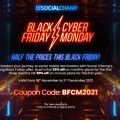Psychological pricing is the retail strategy that persuades customers to buy their products or avail of their services. People in the industry use psychological pricing when they want to make their products and services more enticing to their target customers. This tactic will give the average consumer the impression that they’re getting a great deal out of the purchase.
Why is Psychological Pricing Effective?
This technique works well because lowering the prices by even a small margin makes the product look much more attractive to the consumer.
How your price products and services also affect a buyer’s decision-making. Since most people would like to save rather than spend more than they should, deals like discounts and “buy one, get one” (BOGO) initiatives suddenly look more appealing.
Understanding Your Customers
There are several different ways to price your products and services to influence customers to buy. The most effective methods require that you have an expert understanding of your customers and what motivates them to act as soon as possible.
Before learning to implement psychological pricing into your strategies, you can run surveys and experiments to see when customers are more likely to buy and when they aren’t.
Once you believe you’ve understood your customers enough, there are multiple methods for you to choose to attract customers to buy from you.
For instance, you can use artificial time constraints to make your offer feel urgent to customers. People don’t like missing out on things, so if they see an offer that’s too good to be true is going away soon, they’ll likely make a purchase.
Another is charm pricing, which is a kind of psychological pricing where people think they’re buying a product for less than its original price. You can see this in products that have prices ending in nine, so consumers would tend to round the value down rather than up.
You can use these methods as part of your customer studies. Once you select a type of psychological pricing to use in your marketing, you can decide how best to implement it into your strategies.
Applying Psychological Pricing
The methods for applying psychological pricing are endless.
For instance, you can launch a limited-time campaign where you’re selling products at a discounted price. Because the product is at a discounted price or is on sale for a short period, many would psychologically believe they’d miss out if they don’t buy it now. Other examples of this category include early bird sales and payday sales.
Another method is price anchoring to give consumers perspective on how their products fare compared to their original price. While already at a discount, they still retain the item’s original price so buyers can use it as a point of reference. You may see this often at grocery stores or billboards where the original price is slashed, and a lower price is placed beside it.
With psychological pricing as an effective marketing tool, businesses can sell their products and services while improving their brand awareness and target market. On their own or combining several of the strategies above can also provide revenue benefits for your company.
Continue reading the infographic below to learn more about psycholgical pricing and how to implement it into your business strategies.







